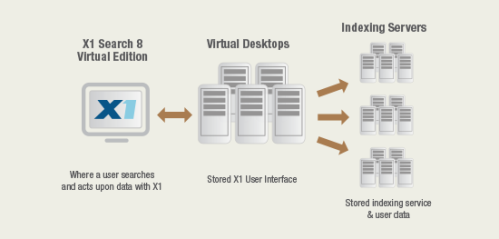![]() X1 Social Discovery is the leading social media and website collection, preservation, and ECA tool on the market. Customers love it for many reasons:
X1 Social Discovery is the leading social media and website collection, preservation, and ECA tool on the market. Customers love it for many reasons:
- Defensibility: MD5 hash values of individual items are calculated upon capture and maintained through export. Automated logging and reports are generated. Key metadata unique to social media & web streams are captured through deep integration with APIs provided by the publishers. This metadata is important to establishing chain of custody and also provides key evidence relevant to the substantive case as well as authentication.
- Ease of use: Investigators can take advantage of the patented X1 Search interface that allows fast-as-you-type search, filtering on metadata, and full-fidelity preview of content to quickly find the information of interest.
- Speed and Scalability: Collect up to hundreds of thousands of items in a single case on an automated basis and search across all the items with lightning fast speed.. Screen shots not only lack defensibility but are far more cumbersome and time consuming.
- Ease of production: Lawyers love X1 Social Discovery because it fits the litigation workflow perfectly and exports data directly into downstream review tools. Other customers like the flexible output options such as PDF, native files, or CSV.
To date, X1 Social Discovery has been available only as a local desktop installation. This works great for customers like law enforcement agencies that need to maintain local possession of evidence by law. Many law firms and insurance companies we speak with, however, yearn for a hosted solution either because they do not want to manage the huge volume of social media that will be collected or because they are not allowed to possess the content locally. The latter comes up with many law firms that have made the decision to outsource all evidence handling to service providers, for example, for policy, ethical and cost reasons.
Now, X1 is partnering with D4 and Duff & Phelps to make Social Discovery available on a hosted basis. This has numerous benefits:
- Economies of scale on data hosting from cloud providers
- Do-it-yourself capabilities along with the X1 expertise available from these premier X1 partners
- Per-matter pricing that allows customers to account for costs by matters (which can be very important to customers like law firms that need to pass through per-matter costs)
In practice, the process is very simple – X1 Social Discovery (which is very deployable in physical, virtual or cloud environments) is stood up in a hosted environment by a service provider. An instance of X1 Social is dedicated to a single case. The service provider hosts and manages the data, allowing the customer a more economical method of manaing the storage of what can be a high-volume data type.
The highly-respected law firm Lewis Brisbois is taking advantage of this capability early and will be briefly discussing these advantages in tomorrow’s webinar about the importance of social media in litigation. Already, there are over 800 registrants for this hot topic event. Attending is a chance to learn how to be ready to handle social media in eDiscovery, as well as why a hosted option can be the right fit. To join the webinar, click here.
If you would like to talk through the hosted capability further and learn more about the workflow, you can email me directly.

 This show had a much different energy than other enterprise software conferences, such as
This show had a much different energy than other enterprise software conferences, such as 


